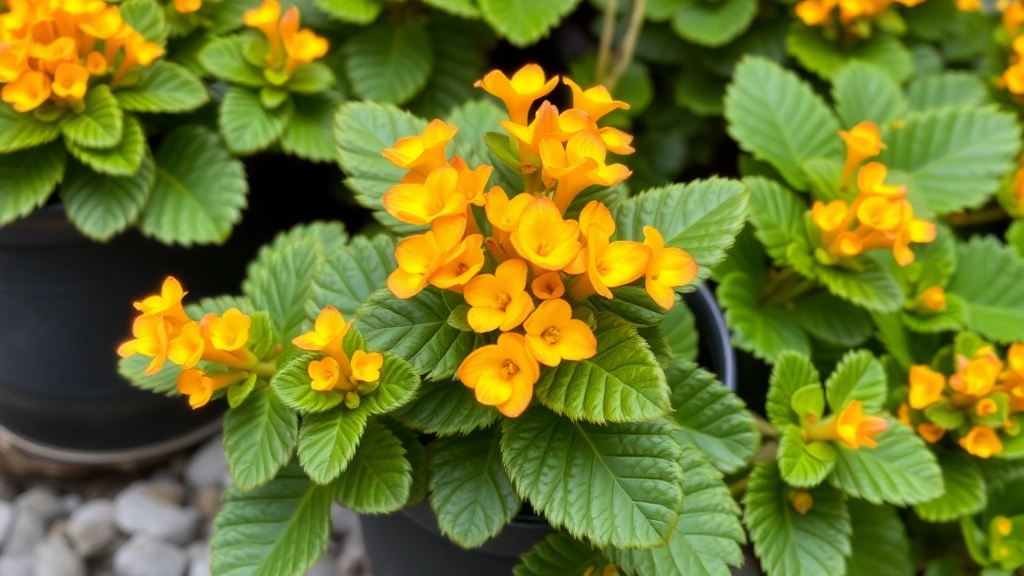Kalanchoe Orange Plant Guide
If you’re looking to add a pop of vibrant colour to your home or garden, the Kalanchoe Orange Plant is a fantastic choice. With its bright orange blooms and easy care routine, this succulent is perfect for both novice and experienced gardeners. In this guide, I’ll share everything you need to know about growing and maintaining a healthy Kalanchoe Orange Plant.
From optimal growing conditions to watering practices, we’ll cover it all. You’ll also learn about the best soil types, light requirements, and how to tackle common issues like legginess and leaf discoloration. Whether you’re growing your Kalanchoe indoors or outdoors, these tips will help you keep your plant thriving year-round.
Optimal Growing Conditions for Kalanchoe Orange Plant
When considering the optimal growing conditions for your Kalanchoe Orange plant, you may find yourself asking, “What do I need to ensure my plant thrives?”
First and foremost, Kalanchoe Orange plants flourish in warm, bright environments. They are native to Madagascar, which means they are accustomed to bright sunlight and warm temperatures.
Light and Temperature Requirements for Healthy Growth
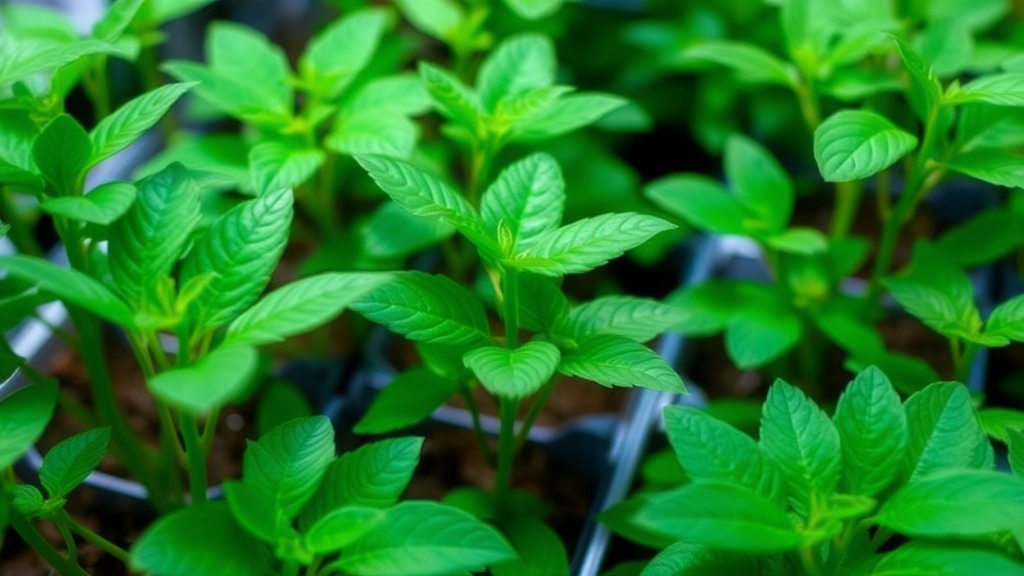
Are you struggling to keep your Kalanchoe Orange plant thriving? One of the key factors is getting the light and temperature just right.
Kalanchoe plants love bright, indirect sunlight. Here’s what you need to know:
- Ideal Light: Aim for around 6 hours of bright light daily. A south or west-facing window is usually perfect.
- Avoid Direct Sun: Too much direct sunlight can scorch the leaves. If you notice browning edges, it’s time to move it back a bit.
- Low Light: If your plant isn’t getting enough light, it may become leggy as it stretches toward the sun.
When it comes to temperature, Kalanchoe is pretty forgiving but has its preferences:
- Optimal Range: Keep your plant in a cozy spot between 15°C and 25°C (59°F to 77°F).
- Avoid Cold Drafts: Sudden temperature changes can stress your plant. Keep it away from drafty windows or doors.
- Winter Care: In colder months, be mindful of keeping it warm, as Kalanchoe doesn’t like temperatures below 10°C (50°F).
When it comes to nurturing your Kalanchoe Orange plant, the right soil is crucial for its health and vitality. You may find yourself wondering: What type of soil is best for Kalanchoe? How can I ensure proper drainage?
### Ideal Soil Composition
Kalanchoe thrives in well-draining soil that mimics its natural arid environment. Here are the key points to consider:
– **Cactus or Succulent Mix**: A pre-mixed cactus or succulent soil is often ideal. These mixes contain sand and perlite, providing excellent drainage.
– **DIY Soil Mix**: If you prefer a homemade solution, combine:
– 2 parts potting soil
– 1 part coarse sand
– 1 part perlite or pumice
This combination ensures aeration and prevents water retention, which can lead to root rot.
### Drainage Solutions
Even the best soil can fail if drainage isn’t addressed. Here’s how to enhance drainage:
– **Pot Selection**: Choose pots with drainage holes. Terracotta pots are particularly effective as they allow moisture to evaporate.
– **Layering**: Add a layer of gravel or small stones at the bottom of the pot before adding soil. This helps excess water flow away from the roots.
– **Avoiding Saucers**: If possible, avoid using saucers under pots to prevent water from pooling.
By ensuring your Kalanchoe is planted in the right soil with proper drainage, you set the stage for vibrant growth and beautiful blooms. For more detailed care tips, you might find this [complete care guide for Kalanchoe Daigremontiana Pink Butterflies](https://planthq.org/complete-care-guide-for-kalanchoe-daigremontiana-pink-butterflies/) helpful. Additionally, if your Kalanchoe has yellow flowers, check out these [care tips for Kalanchoe succulent with yellow flowers](https://planthq.org/care-tips-for-kalanchoe-succulent-with-yellow-flowers/).
Watering Practices: How to Avoid Overwatering and Root Rot
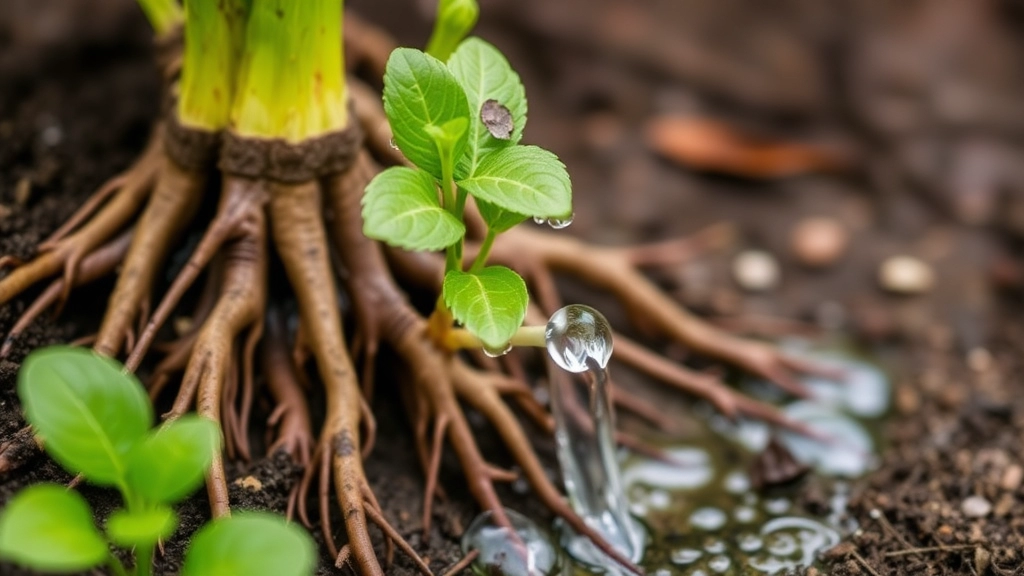
One of the most common concerns for Kalanchoe owners is the risk of overwatering, which can lead to root rot. This issue can be detrimental to your plant’s health, and understanding the right watering practices is essential for thriving Kalanchoe.
Key Watering Tips
- Check the Soil Moisture: Before watering, always check the top inch of the soil. If it feels dry, it’s time to water. If it’s still moist, hold off.
- Water Thoroughly: When you do water, make sure to do so thoroughly until it drains out of the bottom of the pot. This encourages deep root growth.
- Use Well-Draining Soil: Pair your watering practices with a well-draining soil mix to help prevent excess moisture retention.
- Consider the Season: During the growing season (spring and summer), Kalanchoe may require more frequent watering. In contrast, reduce watering during the dormant winter months.
Signs of Overwatering
Be vigilant for signs that your Kalanchoe might be getting too much water:
- Yellowing Leaves: If the leaves start to yellow and become mushy, this may indicate root rot.
- Wilting: Overwatered plants can also appear wilted, despite the excess moisture in the soil.
Preventing Root Rot
To keep your Kalanchoe healthy, consider these preventative measures:
- Use Pots with Drainage Holes: Always choose pots with drainage holes to allow excess water to escape.
- Avoid Saucers: If using a saucer, ensure that it doesn’t collect water underneath the pot.
- Monitor Humidity Levels: Kalanchoe prefers lower humidity levels, so avoid placing it in overly humid environments.
By implementing these watering practices, you’ll significantly reduce the risk of overwatering and root rot, ensuring your Kalanchoe thrives.
As we delve deeper into caring for your Kalanchoe, it’s essential to consider how fertilizing can significantly enhance its growth and blooms. Many plant enthusiasts often wonder how to give their Kalanchoe the right nutrients without overwhelming it.
Kalanchoe plants thrive on a balanced approach to fertilisation, which can lead to vibrant flowers and robust growth. A balanced, water-soluble fertiliser with an N-P-K ratio of 20-20-20 is ideal. Fertilize every 4-6 weeks during the growing season (spring and summer). Always dilute the fertiliser to half the recommended strength to prevent root burn.
Timing is crucial for optimal results. Focus on fertilising during the active growth phase. A boost of fertiliser a couple of weeks before expected blooming can encourage more flowers.
Keep an eye on your plant. If the leaves appear pale or yellow, it may be time to fertilise. Slow or minimal growth can indicate nutrient deficiency.
Consider organic fertilisers like compost tea or fish emulsion for a more natural approach. Too much fertiliser can lead to leggy growth or burnt roots. Always water your Kalanchoe after applying fertiliser to help the nutrients penetrate the soil.
For more detailed guidance on caring for your Kalanchoe, check out our [complete guide](https://planthq.org/caring-for-your-kalanchoe-succulent-a-complete-guide/) and learn about the [causes and solutions for wilting flowers](https://planthq.org/why-are-my-kalanchoe-flowers-wilting-causes-and-fixes/).
Pruning and Deadheading to Encourage New Flowers
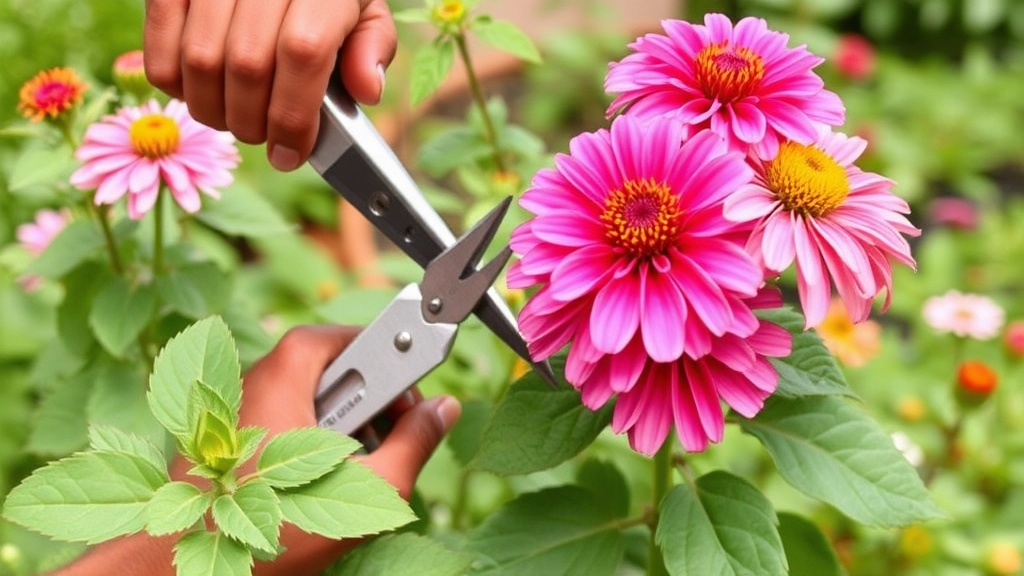
Have you ever noticed your Kalanchoe Orange plant looking a bit tired after its blooming season?
Well, that’s where pruning and deadheading come into play.
These simple practices can breathe new life into your plant and encourage a fresh burst of flowers.
Why Prune and Deadhead?
Pruning and deadheading are essential for:
- Promoting New Growth: Removing spent flowers helps the plant focus its energy on producing new blooms.
- Maintaining Shape: Regular pruning keeps your Kalanchoe looking tidy and encourages a bushier appearance.
- Preventing Disease: Cutting away dead or diseased leaves can help keep your plant healthy.
When to Prune and Deadhead
- After Blooming: Once your Kalanchoe has finished flowering, it’s the perfect time to deadhead those faded blooms.
- Regular Maintenance: Check your plant every few weeks for any dead or yellowing leaves and snip them off.
How to Prune and Deadhead
- Use Clean Tools: Always use sharp, clean scissors or pruning shears to prevent infection.
- Cut at the Base: For deadheading, cut the flower stem just above the first set of leaves.
- Trim Wisely: For pruning, remove any leggy stems and shape the plant as desired.
Tips for Success
- Don’t Overdo It: A little goes a long way. You don’t want to stress your plant.
- Observe Growth: Pay attention to how your Kalanchoe responds. Adjust your pruning habits based on its growth.
Propagation Methods: Stem Cuttings and Offsets
Many plant enthusiasts wonder how to expand their Kalanchoe collection without breaking the bank.
Propagation is a rewarding way to achieve this, and Kalanchoe plants offer two primary methods: stem cuttings and offsets.
Stem Cuttings
Stem cuttings are one of the most popular methods for propagating Kalanchoe. Here’s how to do it effectively:
- Choose a Healthy Stem: Select a healthy, non-flowering stem that’s at least 4-6 inches long.
- Make the Cut: Using clean, sharp scissors, cut just below a leaf node.
- Let It Callus: Place the cutting in a dry, warm location for 1-3 days to allow the cut end to callus over. This reduces the risk of rot.
- Plant in Soil: Once callused, plant the cutting in a well-draining potting mix. Ensure the soil is slightly moist but not soggy.
- Water Sparingly: Water the cutting lightly and place it in bright, indirect light.
Offsets
Offsets, or âpups,â are another easy propagation method for Kalanchoe. Here’s how you can do it:
- Identify Offsets: Look for small plants growing at the base of the parent plant.
- Separate Carefully: Gently twist or cut the offset from the main plant, ensuring you take some roots with it.
- Let It Dry: Allow the offset to dry for a few hours to prevent rot.
- Plant in Soil: Plant the offset in a pot with well-draining soil, water it lightly, and place it in bright, indirect light.
Both methods are straightforward and can yield beautiful results. For more detailed steps, you can refer to our step-by-step guide to florist Kalanchoe propagation. Additionally, if you’re interested in propagating specific varieties, check out our guide on Kalanchoe leaf propagation.
Common Pests and Diseases Affecting Kalanchoe
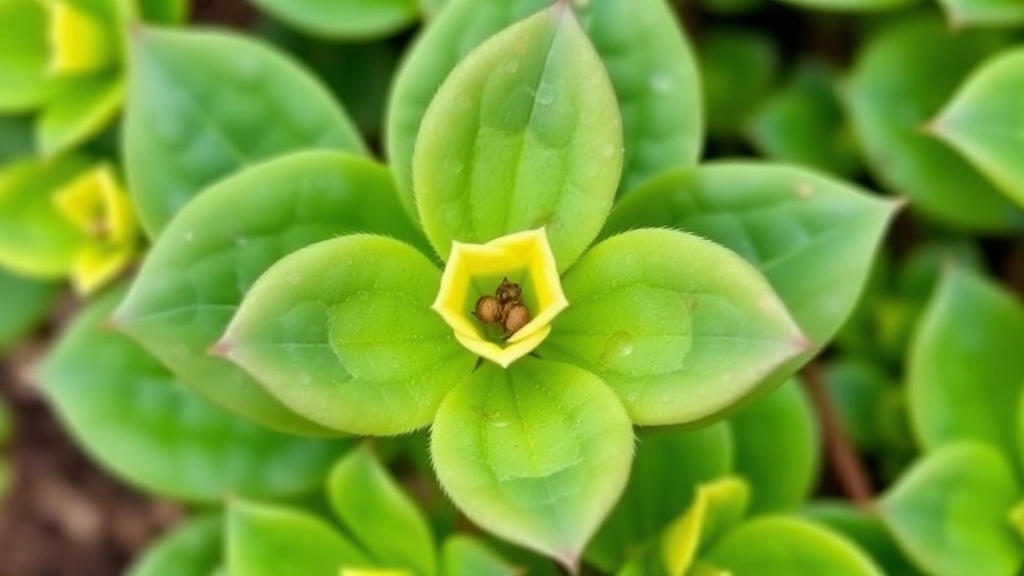
Have you noticed your Kalanchoe looking a bit off? You’re not alone. Many plant lovers face challenges with pests and diseases that can affect these stunning succulents.
Pests to Watch Out For
- Mealybugs
– These little white fluff balls love to hide in the leaf joints.
– They suck the sap, causing yellowing leaves and stunted growth. - Aphids
– Tiny green or black bugs that cluster on new growth.
– They can cause curling leaves and can spread diseases. - Spider Mites
– Look for fine webbing on the undersides of leaves.
– They thrive in dry conditions and can lead to leaf drop. - Scale Insects
– Hard, shell-like bumps on the stems and leaves.
– They can be tricky to spot but can cause significant damage if left untreated.
Diseases to Consider
- Root Rot
– Often caused by overwatering or poor drainage.
– Signs include mushy stems and wilting leaves. - Powdery Mildew
– A white, powdery substance on leaves.
– This fungus thrives in high humidity and poor air circulation. - Leaf Spot
– Dark spots on leaves can indicate bacterial or fungal infections.
– Look for yellowing around the spots and consider removing affected leaves.
Prevention Tips
- Regular Checks: Inspect your Kalanchoe weekly for any signs of pests or disease.
- Good Airflow: Ensure your plant has enough space to breathe. This reduces humidity and prevents fungal issues.
- Proper Watering: Stick to the watering tips we discussed earlier to avoid root rot.
Treatment Options
- Insecticidal Soap: A great option for dealing with mealybugs and aphids.
- Neem Oil: Effective against a range of pests and can help with powdery mildew.
- Remove Affected Parts: Sometimes, the best solution is to prune away the problem areas.
Are you concerned about how to care for your Kalanchoe Orange plant throughout the changing seasons? Understanding its dormancy and bloom cycles is crucial for optimal growth.
## Dormancy Period
Kalanchoe typically enters a dormant phase during the winter months. During this time, your plant will require less water and minimal fertilization. Here’s how to manage this period effectively:
– **Reduce Watering**: Allow the soil to dry out more between waterings.
– **Lower Fertilizer Use**: Avoid fertilising until new growth appears in spring.
– **Maintain Temperature**: Keep your plant in a cool, but not freezing, environment, ideally around 10-15°C.
This dormancy allows your Kalanchoe to conserve energy for the vibrant blooms that follow.
## Bloom Cycles
The blooming phase for Kalanchoe typically occurs in late winter to early spring. To encourage abundant flowers, consider the following tips:
– **Increase Light Exposure**: Ensure your plant receives plenty of indirect sunlight during this time.
– **Regular Watering**: Water consistently, allowing the soil to dry slightly between waterings.
– **Use Fertiliser**: Apply a balanced fertiliser every 2-4 weeks to support blooming.
The joy of seeing your Kalanchoe burst into bloom is well worth the effort.
## Seasonal Adjustments
As the seasons change, so should your care routine. Here’s a quick checklist:
– **Spring/Summer**:
– Increase watering frequency.
– Fertilise monthly.
– Prune dead flowers to encourage new growth.
– **Autumn/Winter**:
– Cut back on watering.
– Avoid fertilising.
– Ensure adequate light without direct sun exposure.
By adapting your care to the seasons, you’ll ensure your Kalanchoe remains healthy and vibrant. For more detailed guidance, check out our [ultimate guide to flowering Kalanchoe care tips for blooming](https://planthq.org/ultimate-guide-to-flowering-kalanchoe-care-tips-for-blooming/) and [why your non-flowering Kalanchoe isn’t blooming: tips and fixes](https://planthq.org/why-your-non-flowering-kalanchoe-isnt-blooming-tips-fixes/).
Troubleshooting Common Problems: Leggy Growth and Yellowing Leaves
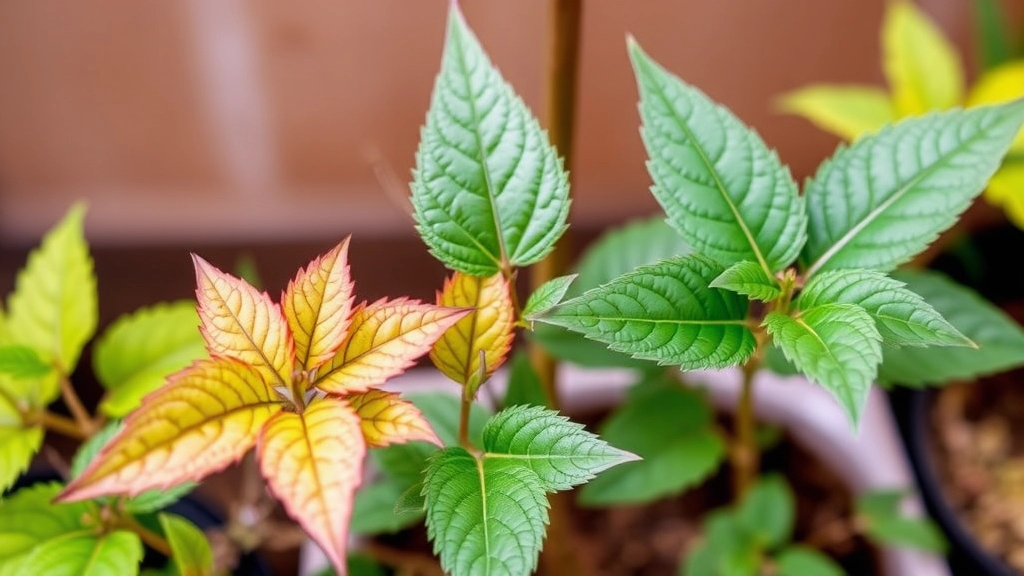
Ever looked at your Kalanchoe and thought, “What’s going on with those leaves?” If your plant is showing signs of leggy growth or yellowing leaves, you’re not alone. These issues can be frustrating, but they’re often easy to fix with a few adjustments.
Leggy Growth
Leggy growth is when your Kalanchoe stretches out, producing long stems with sparse leaves. It can make your plant look weak and unappealing. Here’s what might be happening:
- Insufficient Light: If your Kalanchoe isn’t getting enough sunlight, it will reach for the light, causing those long stems.
- Overcrowding: If your plant is too close to others, it might not get the light it needs.
Quick Fixes:
- Move to a Brighter Spot: Ideally, place your plant where it can soak up bright, indirect light.
- Rotate Regularly: Give it a gentle spin every week to ensure even light distribution.
Yellowing Leaves
Yellow leaves can be a sign of distress, and they often signal a few common issues:
- Overwatering: Too much water can lead to root rot, which makes leaves turn yellow.
- Nutrient Deficiency: A lack of essential nutrients can also cause yellowing.
What to Do:
- Check the Soil: If it’s soggy, hold off on watering. Let it dry out completely before giving it another drink.
- Fertilize: Consider using a balanced fertiliser during the growing season to boost nutrients.
Repotting Guide: When and How to Repot Kalanchoe
As you care for your Kalanchoe Orange plant, you might wonder when it’s time to repot.
Repotting is crucial for maintaining a healthy plant and ensuring optimal growth.
When to Repot Your Kalanchoe
- Root Bound: If you notice roots growing out of the drainage holes or circling the surface of the soil, it’s time to repot.
- Soil Degradation: Over time, potting soil can lose its nutrients. If your plant seems to be growing slower or has yellowing leaves, consider repotting.
- Size Increase: If your Kalanchoe has outgrown its pot and appears top-heavy, a larger pot will help maintain balance.
- Every 1-2 Years: A general rule of thumb is to repot every 1-2 years, even if the plant doesn’t show immediate signs of needing it.
How to Repot Kalanchoe
- Choose the Right Pot:
- Select a pot that is 1-2 inches larger in diameter than the current one.
- Ensure it has drainage holes to prevent water from accumulating.
- Prepare the Soil:
- Use a well-draining potting mix, ideally a cactus or succulent mix.
- You can also add perlite or sand to improve drainage.
- Remove the Plant:
- Gently squeeze the pot to loosen the soil.
- Carefully remove the plant, taking care not to damage the roots.
- Trim Damaged Roots:
- Inspect the roots and trim any that are brown or mushy.
- Place the Plant in the New Pot:
- Add a layer of fresh soil to the bottom of the new pot.
- Position the Kalanchoe in the centre and fill in around the sides with more soil.
- Ensure the top of the root ball is level with the rim of the pot.
- Water Thoroughly:
- Water the plant well after repotting to help settle the soil.
- Allow excess water to drain out.
- Post-Repotting Care:
- Place the repotted Kalanchoe in a location with bright, indirect light.
- Avoid direct sunlight for a few days to help it adjust.
Repotting your Kalanchoe can rejuvenate its growth and keep it thriving. For more detailed care tips, check out our Kalanchoe Flaming Katy Care Guide and learn how to propagate Kalanchoe in water for a flourishing plant collection.
Indoor vs Outdoor Care: Adapting Your Kalanchoe to Different Environments
So, you’ve got your Kalanchoe Orange plant and you’re wondering how best to care for it, whether it’s indoors or outdoors.
Indoor Care Tips
When you bring your Kalanchoe inside, you want to mimic its natural environment as much as possible. Here’s how:
- Light: Place it near a bright window, but avoid direct sunlight. Too much can scorch those lovely leaves.
- Temperature: Keep your indoor space between 15°C to 25°C. Kalanchoes are not fans of the cold, so keep them away from drafts.
- Humidity: They thrive in low humidity. If your home is humid, consider using a dehumidifier.
Outdoor Care Tips
If you’re taking the plunge and putting your Kalanchoe outside, here’s what to keep in mind:
- Sunlight: Choose a spot with partial shade. Too much sun can lead to wilting.
- Soil: Use well-draining soil to prevent water accumulation. A cactus mix works wonders.
- Temperature: Ensure nighttime temperatures don’t drop below 10°C. Kalanchoes are not frost-tolerant.
Key Differences
- Watering: Indoors, you might need to water less often due to lower evaporation. Outdoors, check the soil more frequently, especially in warmer months.
- Pests: Indoor plants might attract spider mites, while outdoor ones could face aphids. Keep an eye out!
- Fertilizing: Indoor Kalanchoes might need more frequent feeding during the growing season, while outdoor ones can often rely on natural nutrients.
For a comprehensive guide on how to care for Kalanchoe plants both indoors and outdoors, check out our Kalanchoe Blossfeldiana Indoor vs Outdoor Care Guide. Additionally, if you’re interested in the various types and propagation methods of Kalanchoe Tomentosa, we have detailed information available.
FAQs about the Kalanchoe Orange Plant
What type of light does the Kalanchoe Orange Plant need?
The Kalanchoe Orange Plant thrives in bright, indirect sunlight. Aim for around 6 hours of bright light daily, preferably from a south or west-facing window. Be cautious of too much direct sunlight as it can scorch the leaves.
What is the ideal temperature range for the Kalanchoe Orange Plant?
The optimal temperature range for the Kalanchoe Orange Plant is between 15°C and 25°C (59°F to 77°F). Avoid exposing the plant to temperatures below 10°C (50°F) and keep it away from cold drafts.
How often should I water my Kalanchoe Orange Plant?
Water your Kalanchoe Orange Plant when the top inch of the soil feels dry. Water thoroughly until it drains out of the bottom of the pot. Reduce watering during the dormant winter months.
What are the signs of overwatering in Kalanchoe Orange Plants?
Signs of overwatering include yellowing leaves and wilting despite the soil being moist. Overwatering can lead to root rot, which is detrimental to the plant’s health.
How can I prevent root rot in my Kalanchoe Orange Plant?
To prevent root rot, use pots with drainage holes, avoid water collection in saucers, and ensure the plant is in well-draining soil. Monitor humidity levels as Kalanchoe prefers lower humidity environments.
When and how should I prune and deadhead my Kalanchoe Orange Plant?
Prune and deadhead your Kalanchoe Orange Plant after it has finished flowering. Use clean, sharp tools to cut the flower stem just above the first set of leaves. Regular maintenance includes checking every few weeks for dead or yellowing leaves and snipping them off.
What pests commonly affect the Kalanchoe Orange Plant?
Common pests include mealybugs, aphids, spider mites, and scale insects. Regular checks and maintaining good airflow around the plant can help prevent infestations.
What diseases should I be aware of with the Kalanchoe Orange Plant?
Diseases to watch for include root rot, powdery mildew, and leaf spot. Proper watering, good air circulation, and regular inspections can help prevent these issues.
How can I fix leggy growth in my Kalanchoe Orange Plant?
Leggy growth is often due to insufficient light. Move your plant to a brighter spot with indirect sunlight and rotate it regularly to ensure even light distribution.
Why are the leaves on my Kalanchoe Orange Plant turning yellow?
Yellowing leaves can be a sign of overwatering or nutrient deficiency. Check the soil moisture and adjust watering practices. Consider using a balanced fertilizer during the growing season to provide essential nutrients.
References
-
How To Care For A Kalanchoe – Gardening Know How
-
Kalanchoe Plant Profile – The Spruce
-
Kalanchoe: How to Grow and Care for Kalanchoe Plants – The Old Farmer’s Almanac
